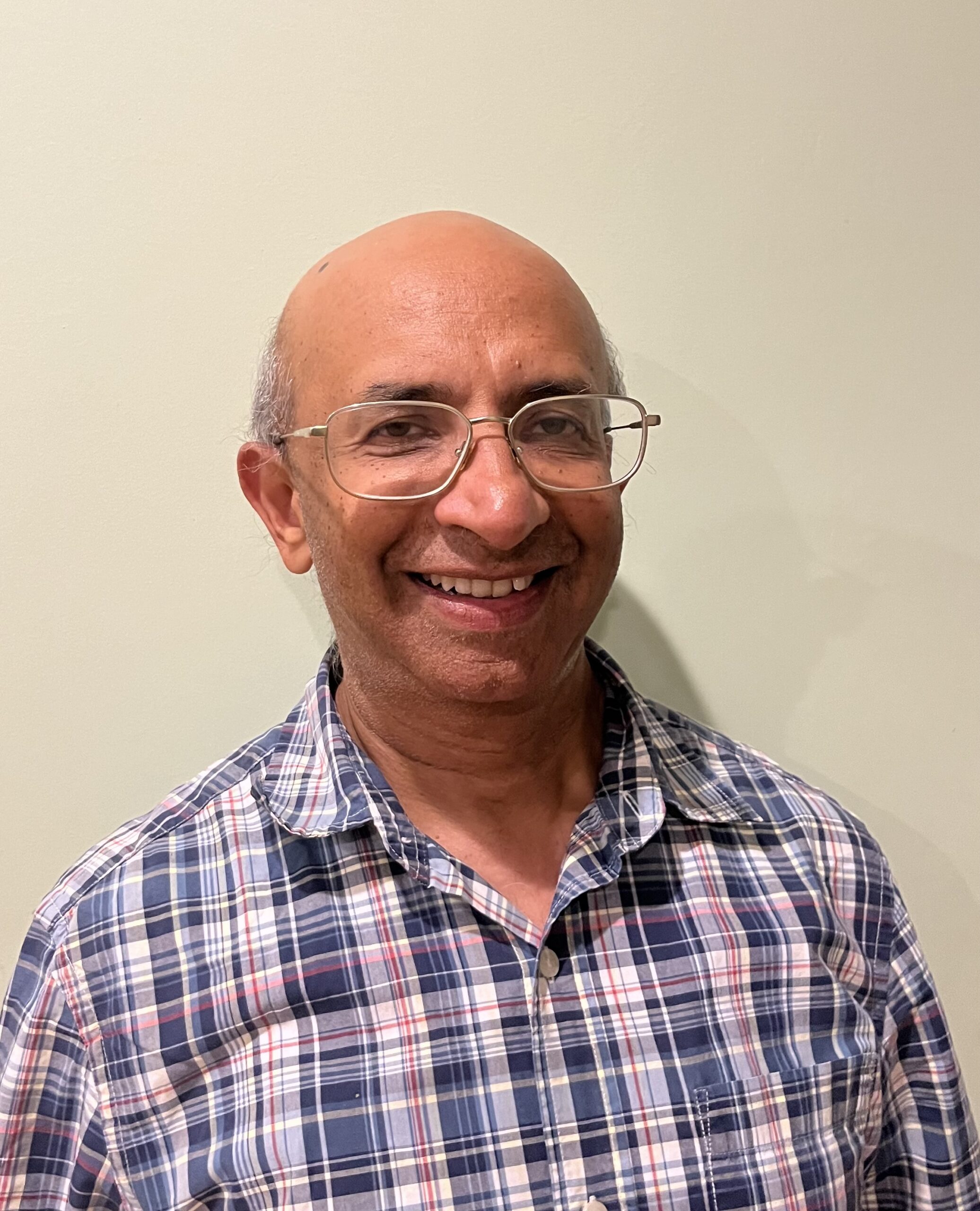
CQE PI Feature -Senthil Todadri
Featured in QSEC September newsletter 2025
Senthil Todadri works on the theory of quantum systems with many interacting degrees of freedom. Such systems arise in many different areas of physics. In condensed matter physics, the electrons must be treated quantum mechanically at any reasonable temperature and hence quantum materials are a great setting for explorations of quantum many body physics. Cold atomic systems provide another realization with a high degree of control over the microscopic setting to explore the emergence of macroscopic phenomena. In high energy physics, any quantum field theory has a large number of degrees of freedom, and hence is also a quantum many body system.
Quantum devices of the kind that are being developed currently are also systems where many individual quantum entities interact with one another. Thus the broad area of quantum many body physics is intimately tied with the study of quantum materials, with quantum field theory, and with the science of quantum devices.
Finally, there is a healthy and fruitful overlap between ideas in quantum information science and quantum many body physics. For instance studying the entanglement properties of ground state wave functions in many body systems has proven to be an important tool in classifying distinct quantum phases of matter.
In this broad area, Senthil is specifically interested in developing the theory of conceptually interesting phenomena, by combining phenomenological modeling of experiments with abstract theoretical ideas and methods.
Much of our understanding of the ground states of quantum matter hinge on two important ideas which can be both be traced to Lev Landau from the mid-twentieth century. The first is the idea of spontaneously broken symmetry which is quantified by the notion of a Landau order parameter. The second is the idea that low energy excited states can be described in terms of well-defined `quasiparticles’.
Both of these ideas have been severely challenged by many discoveries in quantum materials in the last few decades, eg, the fractional quantum Hall effect (where the electron splits into quasiparticles that carry a fraction of its electric charge), or high temperature superconductivity which emerges from a metallic state which apparently has no quasiparticle excitations. We continue to be surprised by what a macroscopic collection of quantum entities can do!
Senthil has worked on many different questions in this area. One area of current interest is in understanding the nature of metals with no quasiparticles. As a relatively recent result, he (together with former Moore postdoctoral fellow Dominic Else and other collaborators) has obtained general constraints on the nature of such a state that does not rely on any particular microscopic model.
Another area of his current interest is the physics and phenomenology of two dimensional moire materials pioneered initially by MIT’s Pablo Jarillo-Herrero. His work (with many collaborators) played a crucial role in recognizing that these systems bring together strong correlation and band topology. His group predicted that moire graphene systems are a suitable platform for ferromagnetism and a (fractional) quantum anomalous Hall effect which have since been seen in experiments.
Most recently Senthil (primarily with his student Zhengyan Darius Shi) has explored the physics of `anyonic quantum matter’, namely the fate of a macroscopic collection of `anyons’ (identical particles that are neither bosons nor fermions). Such particles find a natural realization in systems showing the fractional quantum Hall effect mentioned above. Importantly in the last two years, the fractional quantum Hall effect has been discovered (including by MIT’s Long Ju) in two dimensional moire materials in the absence of any external magnetic fields, unlike in earlier realizations. In this new setting, anyons with fractional electric charge can move freely with some kinetic energy once they are created. Changing the charge density away from the specific one at which the fractional quantum Hall phenomenon is seen (a process known as doping which is easily attained in moire materials through electrostatic gating) leads to a realization of a mobile fluid of anyons.
Shi and Senthil show that the resulting system has a number of interesting ground states depending on details. Most intriguingly, such a collection of anyons can become a superconductor, a beautiful old idea that till now has not seen fruition in any experimental context. Shi and Senthil showed how this novel route to superconductivity might appear near specific fractional quantum Hall states in moire materials. Such a superconductor may even have been seen in very recent experiments on twisted bilayers of the semiconductor MoTe2.
Senthil enjoys the outstanding environment for research in quantum science at MIT, both in its realization in quantum materials and in the broader context of quantum many body physics. His fantasy is that the further development of experiments and theory on quantum many particle systems will not only continue to yield surprises in terms of their emergent behavior but may offer very stringent tests of quantum mechanics itself.




Copyright © 2022-2023 MIT Center for Quantum Engineering – all rights reserved – Accessibility


